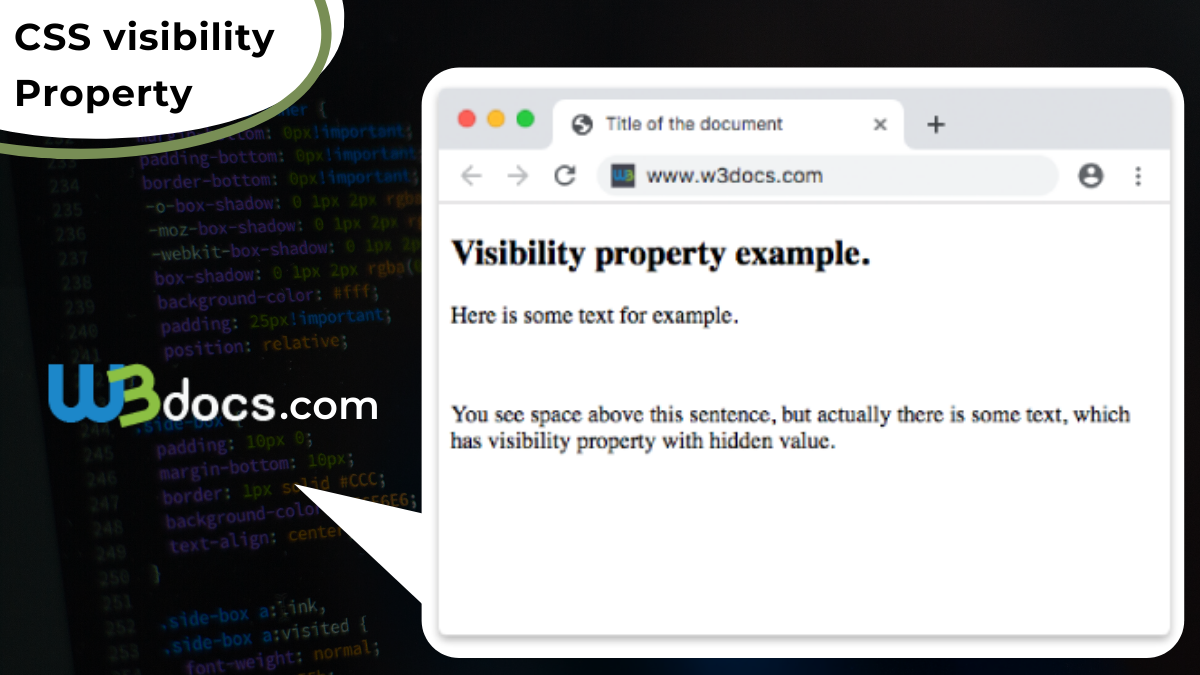has a display value of block. If you need to learn more, its recommended you join the best Web Development courses online today. It simply means that every HTML element has a display value attached with by default.

It removes the element as if the element never existed. visibility:hidden - It is not visible but gets up it’s original space whereas, display:none - It is hidden and takes no space. The CSS display none property is commonly used with JavaScript to hide and show elements without deleting and recreating them. If this parameter is an observable value, the binding will update the element’s visibility whenever the value changes. visibility:hidden and display:none are totally different used in css property. The hidden binding works oppositely-when the parameter is true, it hides the element by setting the display style to none and when the parameter is false, it removes the display style. Note that any display style you’ve configured using your CSS rules will then apply (so CSS rules like x work fine in conjunction with this binding). When the parameter resolves to a true-like value (e.g., the boolean value true, or a non- null object or array), the visible binding removes the value, causing it to become visible. This takes priority over any display style you’ve defined using CSS. When the parameter resolves to a false-like value (e.g., the boolean value false, or the numeric value 0, or null, or undefined), the visible binding sets to none, causing it to be hidden. ShouldShowMessage: ko.observable(true) // Message initially visible To make the element visible again, you will change this property to: display: block. You will see this message only when "shouldShowMessage" holds a true value. This is one of several ways to hide content using CSS.
Usage with AMD using RequireJs (Asynchronous Module Definition). Overview: What components and custom elements offer 486 Likes, 7 Comments - Stella Coding HTML CSS JAVASCRIPT (coding.stella) on Instagram: 'CSS Display Vs Visibility Explained Get creative with CSS display and visibility properties. Preprocessing: Extending the binding syntax CSS has two properties used to control visibility: The visibility property and the display property. How KO works and what benefits it brings. Use the display property to both hide and remove an element from the document layout Show demo Browser Support The numbers in the table specify the first browser version that fully supports the property. Tip: Hidden elements take up space on the page. #CSS VISIBILITY VS DISPLAY CODE#
If you toggle this “hidden” class using JavaScript, you might have code that looks like this: let box = document.getElementById('box'),ītn. The visibility property specifies whether or not an element is visible. Notice I have display: none and opacity: 0 on my “hidden” class.

The first thing you might think of doing is using both the opacity property and the display property. Let’s look at how you might attempt to solve this problem, step by step. display:none removes the element from the document. You want to use CSS for the animation, not a library.įor this reason, animating opacity to zero is simply not enough because an element with zero opacity still occupies the same space on the page. visibility:hidden hides the element, but it still takes up space in the layout.You don’t want that element to take up space after it has disappeared (i.e., you want the disappearance to cause reflow).You want to make an element gradually disappear visually from the page.The need to animate the display property comes from wanting to solve the following problem: But there are ways to work around it, and I’ll present one way here. how would you animate to “display: table”?).

It would be great if you could do it, but it’s not currently possible and I’m guessing it never will be (e.g. One of the properties that cannot be animated is the display property. As you might already know, CSS transitions and animations allow you to animate a specific set of CSS properties.



